Colt 1849 Colt Pocket Model Pistol Revolver 31 caliber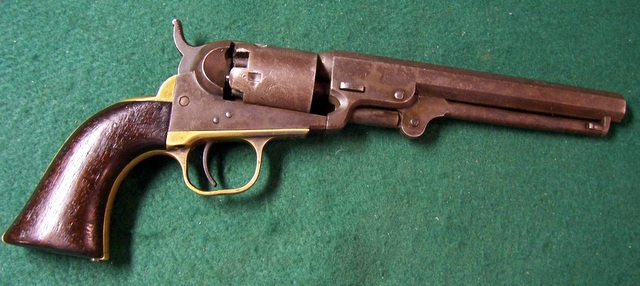
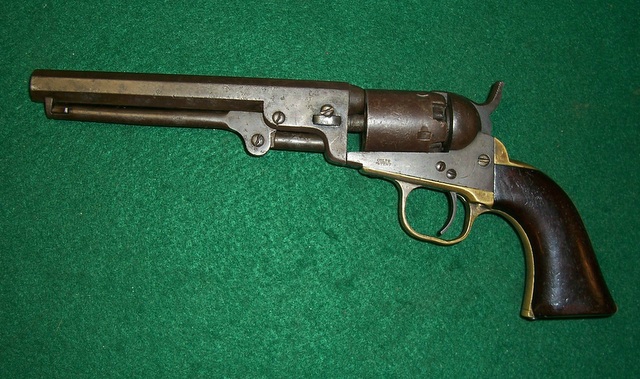

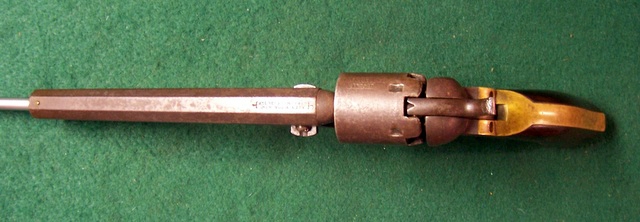
Month: December 2017
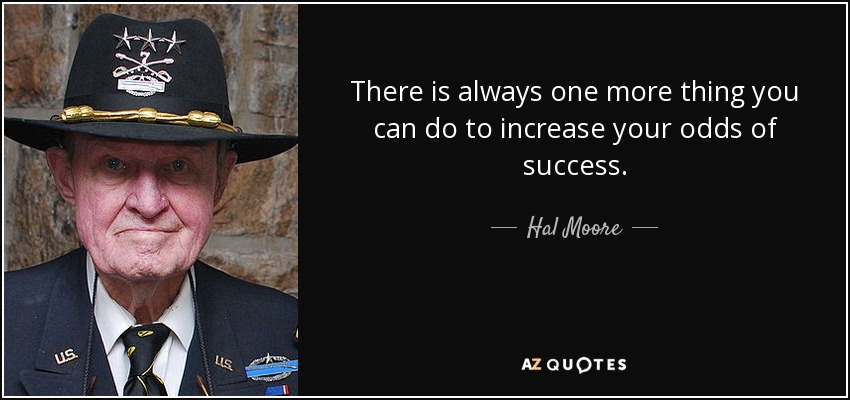 This was also another one Stud of a man! By the Way!
This was also another one Stud of a man! By the Way!
Dear Beloved Reader, It seems that there’s always something new on the Web to be found. So I thought that I would share this with you. I hope that you are having as much fun right now as I am!
Grumpy
PS I also found out that he loved Ice Skating and once flooded and then froze somehow a part of his home to skate. Weird huh?
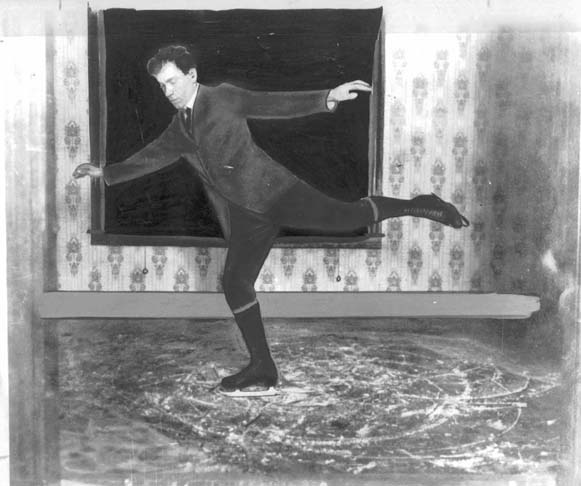
That & here is his old Drivers License
John Garand
| Jean (John) Cantius Garand | |
|---|---|
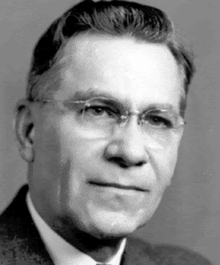 |
|
| Born | January 1, 1888 St. Rémi, Quebec, Canada |
| Died | February 16, 1974 (aged 86) Springfield, Massachusetts, U.S. |
| Nationality | Canadian, American |
| Occupation | Designer, Engineer |
| Years active | 1917-1953 |
| Employer | Springfield Armory |
| Known for | First successful semi-automatic rifle put into active military service |
| Notable work | M1 Garand |
| Awards | Meritorious Civilian Service Award in 1941 Medal for Merit in 1944 |
Jean Cantius Garand (/ˈɡærənd/; January 1, 1888 – February 16, 1974), also known as John C. Garand, was a Canadian-American designer of firearms who created the M1 Garand, a semi-automatic rifle that was widely used by the U.S. Army and U.S. Marine Corps during both World War II and the Korean War.
Early life
Garand was one of twelve children (six boys and six girls) born on a farm near St. Rémi, Quebec.[1] His father moved to Jewett City, Connecticut, with the children when their mother died in 1899. All of the boys had the first name St. Jean le Baptiste, but only he went by the first name Jean. The other boys went by their middle names. Several of his brothers were also inventors. The children were employed in a textile mill where Jean learned to speak English while sweeping floors. Jean became interested in guns and learned to shoot after working at a shooting gallery.[2] Jean learned machinist skills while working at the textile mill, and was hired by Browne and Sharpe, a Providence, Rhode Island, toolmaking company in 1909. Later, he found employment with a New York toolmaking firm in 1916, and resumed rifle practice at the shooting galleries along Broadway.[3] Garand became a naturalized United States citizen in 1920.[4]
Designer of firearms
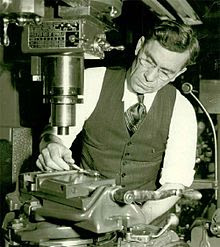
Garand at Springfield Armory
Garand’s fondness for machinery and target shooting blended naturally into a hobby of designing guns, which however took a more vocational turn in 1917. That year the United States Army took bids on designs for a light machine gun, and Garand’s design was eventually selected by the War Department. Garand was appointed to a position with the United States Bureau of Standards in Washington D.C. with the task of perfecting the weapon. The first model was not built until 1919, too late for use in World War I, but the government kept employing Garand as an engineer with the Springfield Armory starting from November 4, 1919 until he retired in 1953.[5]
In Springfield, Massachusetts, Garand was tasked with designing a basic gas-actuated self-loading infantry rifle and carbine that would eject the spent cartridge and reload a new round based on a gas-operated system. Designing a rifle that was practical in terms of effectiveness, reliability, and production, stretched over time; it took fifteen years to perfect the M1 prototype model to meet all the U.S. Army specifications.[6][7] The resulting Semiautomatic, Caliber .30, M1 Rifle was patented by Garand in 1932,[8] approved by the U.S. Army on January 9, 1936, and went into mass production in 1940. It replaced the bolt-action M1903 Springfield and became the standard infantry rifle known as the Garand Rifle.[9] During the World War II, over four million M1 rifles were manufactured.[10] The Garand Rifle proved to be an effective and reliable weapon and was praised by General MacArthur.[11] General Patton wrote, “In my opinion, the M1 rifle is the greatest battle implement ever devised.”[12]
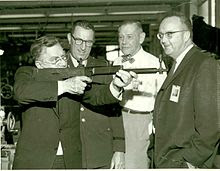
Garand shouldering the Springfield Armory SPIW Concept #1 prototype
In the late 1940s and early 1950s, Garand had designed and built a prototype bullpup rifle. It fired the same cartridge as the M1, but the magazine, action and shape were completely different.[13] It was a select-fire design, and had a firing rate of about 600rpm.[14] When Garand retired in 1953, the second version of the T31 was incomplete, and remained so. The project was scrapped, and the gun was retired to the Springfield Armory museum in 1961.
Garand never received any royalties from his M1 rifle design despite over six and a half million M1 rifles being manufactured as he transferred on January 20, 1936 all rights regarding his inventions to the U.S.[5][15][16] A bill was introduced in Congress to award him $100,000 in appreciation, but it did not pass. Garand remained in his consulting position with the Springfield Armory until his retirement in 1953, and died in Springfield, Massachusetts in 1974. He was buried at Hillcrest Park Cemetery in Springfield.
Family
Garand married French Canadian widow Nellie Bruce Shepard (3 Aug 1900 – 25 Feb 1986) on 6 September 1930 in Albany, NY. She had two daughters by her previous marriage, and they had a daughter and a son of their own.[17][18][19][20]
Recognition[edit]
For his work with the Springfield Armory, Garand was awarded the Meritorious Civilian Service Award in 1941, the Alexander L. Holley Medal from the American Society of Mechanical Engineers, and the first Medal for Merit (together with Albert Hoyt Taylor) on March 28, 1944.[21] In 1973, Garand was inducted into the U.S. Army Ordnance Corps Hall of Fame for designing the M1 Rifle or The Garand.[22] The Hall of Fame entry acknowledges both Garand’s inventive genius and engineering skills:
Due to his initiative and instinctive inventive genius, the U.S. soldier possessed a firepower advantage during World War II. His remarkable mechanical skill and singular determination resulted in the design of numerous tools, jigs, and gauges necessary for the production of the “Garand Rifle.” A remarkable engineering genius in the field of ordnance, his invaluable contributions served an important role in the history of World War II.[23]
Name pronunciation[edit]

Garand points out features of his M1 Rifle to general Charles M. Wesson, the U.S. Army Chief of Ordnance
Pronunciation of the name Garand is often disputed, being pronounced variably as /ɡəˈrænd/ or /ˈɡærənd/. Descendants of John Garand and his close friend general Julian Hatcher generally agree that it is the latter, rhyming approximately with ‘errand’.[24]
References
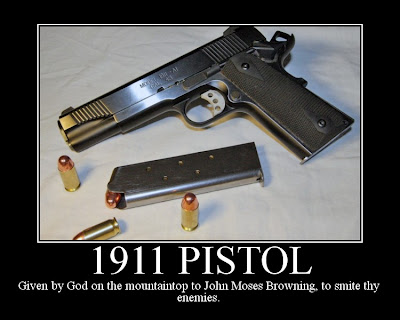
Malta

Okay now I am guessing that you are going what has Malta have to do with shooting. Right? So please bear with me on this one. All right?


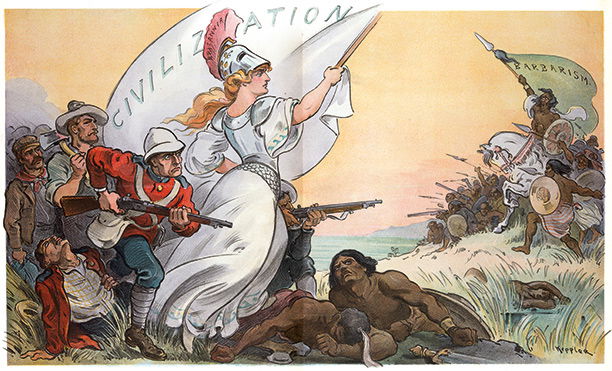 Yeah I know this picture is not very PC nowadays!
Yeah I know this picture is not very PC nowadays!


Breaking: CMP Releases Important Info on Surplus 1911s
Editor’s note: Just received the following email in my inbox, figured I’d get the word out right away… If you haven’t heard, the Civilian Marksmanship Program got the green light to surplus 1911s next year. Apparently, there will be as many as 10,000 available for purchase. Given the high demand, there have been a lot of questions on how CMP will orchestrate the sale of these historic pistols. Well, CMP’s chief operating officer Mark Johnson just sent out the following:
To all CMP constituents:
Some preliminary decisions:
- Decisions concerning the grade and pricing of the 1911s will not be made until inspection has occurred of a substantial quantity which will take an estimated 150 days post receipt.
- All laws pertaining to the sale of 1911s by CMP will be strictly obeyed.
- Potential purchasers will have to provide to CMP a new set of documents exhibiting: 1) proof of U.S. Citizenship, 2) proof of membership in a CMP affiliated club, 3) proof of participation in a marksmanship activity, 4) a new form 2A with notary, 5) successful completion of a NICS background check, 6) a signed copy of the 01 Federal Firearms License in which the 1911 will be transferred to.
- The CMP customer will be required to complete a form 4473 in person and successfully complete another NICS check by the recipient FFL holder before the pistol can be transferred.
- Qualified CMP customer will only be allowed to purchase one 1911 per calendar year.
- No 1911s available in the CMP stores, or on line, only mail order sales.
- CMP will set the date in which it will accept orders for the 1911s. The date will be posted to the world.
- Orders will only be accepted via mail order delivery.
- Orders will only be accepted post marked on the date or after, no early orders.
- Once CMP receives 10,000 orders, customer names will be loaded into the Random Number Generator.
- The Random Number Generator will provide a list of names in sequence order through a random picking process to CMP.
- Customers will be contacted in the sequence provided by the Random Number Generator.
- When the customer is contacted a list of 1911 grades and pricing options that are available will be offered for selection of one.
- As CMP proceeds down the sequenced list less grade and pricing options will be available. Again, this done completely random.
About the CMP
This rifle is typical of the Sporterized Mauser class of rifles. I am willing to bet that somebody brought this back from the ETO after WWII.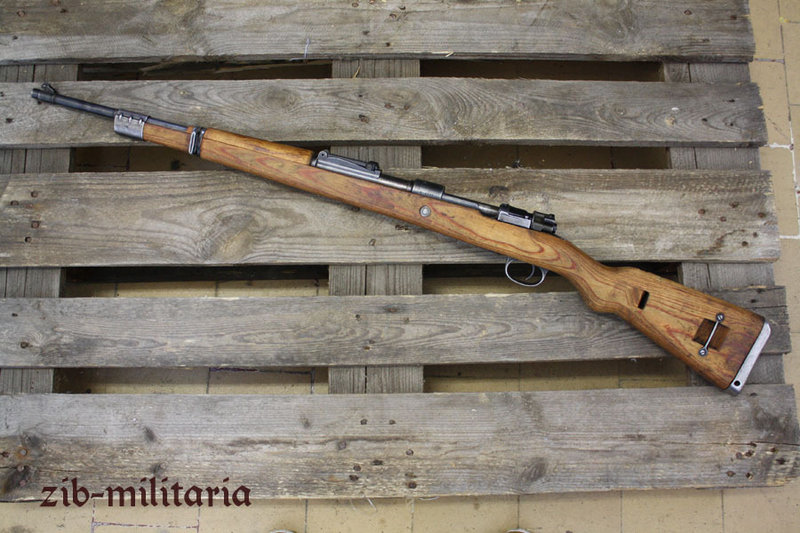
Also you can tell it’s a late period rifle by the stamped steel magazine plate on the bottom. As you can guess in the last days of Hitler’s Insane Reign, Things had gotten pretty desperate!
As you can guess in the last days of Hitler’s Insane Reign, Things had gotten pretty desperate!
Anyways enjoy the show!
Grumpy










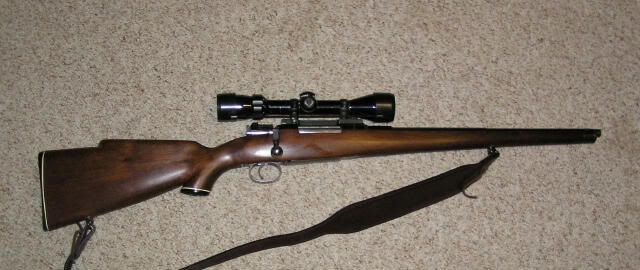

I am very sure that these guns has killed its fair share of deer & other game though. That and brought a lot of happiness & joy to their owners over the years.
May they always have a good home!

It was at Creekside Gun Shop near Rochester, NY, and the nice man said on the telephone that this one had some piece of wood, and that I really had better grab it fast before someone else did.
That was all I needed to hear. It was 1966, and I was as poor as owl dung, but I scraped together every cent I had and off I went to Creekside.
The stock was as advertised. In the 1960s, Weatherby Mark V stocks could be dead plain, or have a little figure, or be fancy enough to induce glaucoma; it was all luck of the draw.
Being a woodchuck hunter at the time, I proceeded to put together some handloads with 87-grain Hornady Spire Point bullets and a munificent charge of the old H4831, and was astonished when the .257 put five shots into an inch. Back then, you didn’t see minute-of-angle groups from big-game rifles.
I found, however, that as a woodchuck rifle for farmland, it was way too much—too much power, and especially, too much noise. One farmer, who was used to me popping away in his pasture with a .222, came out in a great sweat when I fired the .257 to ask if my rifle had exploded.
So I sold it. As John Barsness has pointed out, the gun-writing business is a cruel mistress that allows us to keep very few rifles, unless we have lots and lots of money. You have to keep turning them over in order to obtain the necessary experience.
After that, I had at least two more Mark Vs in .257 Weatherby, and they left, too, and now I’ve acquired my fourth or fifth, because when the Great Range Officer in the Sky says that I’ve completed my last leg, I’d like to have one on hand. This one is even prettier than the 1966 rifle.
Roy Weatherby introduced the .257 into his family of cartridges in 1948. The other .25s on the market then were the .250/3000 Savage, which was the first round to crack the 3,000 fps barrier
the .257 Roberts, which was dreadfully underloaded then as it is now, and the .25/06, which was strictly a handloading proposition. Ballistically, the Weatherby round was light years ahead of the other three. It was like dropping a Corvette Z06 in amongst a pack of Hupmobiles.
The .257 was Roy Weatherby’s favorite. Today, it’s either the second or third most popular cartridge in the lineup. It’s an exceedingly flat shooter, but without the recoil of the larger-caliber magnums. If you can handle a .30/06, you can handle this round (the muzzle blast, however, tends to be ferocious).
After I accepted that it was much too powerful for varmints (except for coyotes, on which it excels) I limited myself to 120-grain Nosler Partitions and found lasting nirvana.
Weatherby says its factory ammo propels this bullet at 3,300 fps, and I recall that the point blank range is something like 350 yards.
Weatherby, incidentally, has always been dead honest about their velocities, probably because they have never had anything to hide. If you want to do the range-compensating-scope dance, you can far exceed that.
How does the .257 stack up against its new small-diameter cousin, the 6.5/300? On the one hand, the latter round will considerably outrange the former one; the bullets are heavier, of far higher ballistic coefficient, and go considerably faster. On the other hand, the 6.5/300 is no delight to shoot.
Its whopping powder charge produces a cataclysmic report and a fair amount of recoil. Also, the ammo costs a lot more.
And, does one buy the traditional wood-stocked Mark V or the synthetic-stocked Accu-Mark? If you’re looking at it from a practical standpoint, the Accu-Mark is the way to go. When Weatherby says “Accu” they are not kidding.
These heavy, synthetic-stocked, fluted- stainless-steel-barreled tack drivers are the last word in lethality.
But I got a traditional Mark V Deluxe with a very pretty stock and French, or skipline, checkering. It’s much too shiny to be a practical hunting rifle. So what? I have enough practical hunting rifles.
Practical isn’t everything.
S&W
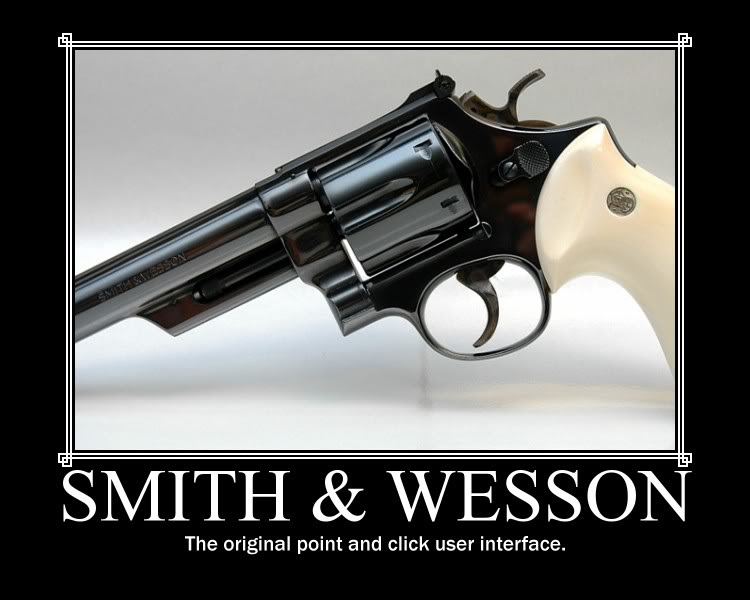
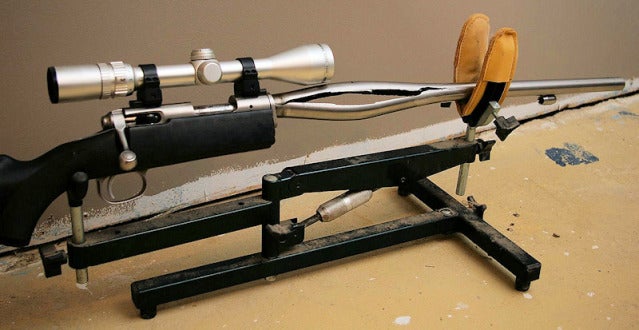


IOWA CITY, Iowa (AP) — It was the opening day of deer hunting season, and Ronald Hansen says he loaded his rifle the same way he had countless times before, aimed at a target and fired a shot.
This time, the gun barrel exploded, knocking the farmer from Hampton, Iowa, backward, severely damaging his right hand and ear and burning his face.
Unknown to Hansen, the manufacturer of the rifle that injured him in 2014 had received other complaints of explosions and injuries over the prior decade. Customers repeatedly reported that the barrel of the stainless steel 10 ML-II muzzleloader exploded, burst, split or cracked, according to thousands of court documents reviewed by The Associated Press.
Lawyers for the company, Westfield, Massachusetts-based Savage Arms, were expected to appear Wednesday in federal court in Iowa to defend against a lawsuit filed by Hansen. He is seeking damages for his injuries, alleging the company failed to warn customers about the defect.
It’s one of several lawsuits that have claimed the company recklessly kept the muzzleloaders on the market even as they kept occasionally mangling hands, damaging hearing and burning faces. At least three have been settled on a confidential basis since last year.
Martin Crimp, a Michigan State University metals expert who examined a 10ML-II that exploded and caused a hunter to lose multiple fingers in 2009, told the AP the barrel of that gun was “metallurgically defective.”
An expert hired by Hansen’s lawyers came to a similar conclusion, saying the steel used to make the rifle was prone to catastrophic failure after repeat firings.
Anthony Pisciotti, an outside lawyer for Savage Arms, said he wasn’t authorized to comment. A spokesman for its parent company, Vista Outdoor, didn’t return messages.
Savage Arms, which discontinued the gun in 2010 after thousands were on the market, has insisted it’s safe when used properly, has no defects and was designed in accordance with industry standards.
Savage Arms has argued that operator error is to blame for the explosions, saying users must have created too much pressure inside the barrel either by loading two bullets or using the wrong amount or type of gunpowder. It has issued a safety notice on its website warning owners to “carefully follow the safe loading procedures” in the product manual to avoid injuries.
Hansen’s case highlights how gun makers, unlike manufacturers of other consumer products, have the sole discretion to decide themselves whether to recall potentially dangerous weapons. In 1976, Congress blocked the newly-created Consumer Product Safety Commission, which has broad authority to regulate everything from toasters to toys and BB guns, from restricting the manufacture or sale of firearms.
“It’s an example of an industry that can essentially do whatever they want and there’s no consequences other than being held accountable in a civil liability context,” said Kristen Rand, legislative director of the Violence Policy Center in Washington D.C.
Other companies have faced allegations that they allowed unsafe guns to stay on the market. Remington agreed to replace triggers in its popular Model 700 rifles — only after several lawsuits claiming that they were prone to accidentally discharging. Ruger was accused of marketing revolvers for decades that could fire when dropped.
Savage Arms recently agreed to settle a lawsuit filed by Trent Procter, who was on a hunting trip with friends in October 2009 when the 10 ML-II he’d owned for years “just blew apart” when he shot at a target.
Procter, 48, missed nine months of work from his job as a power company lineman as he endured surgeries on his left hand and rehabilitation. He had to move to a different job and still experiences numbness due to nerve damage in his hand, where he’s missing parts of his thumb and middle finger.
Photos of Procter’s hand were shared on hunting websites after the explosion, and he said it was insulting that some suggested he and not a defective product was to blame.
“I’m surprised it was never recalled or a warning was put out that this was actually happening,” he said. “It’s quite scary when you think about it.”
Last year, the company also settled a case brought by Michigan hunter Rodney Palatka and his wife, who was pregnant with twins and suffered a miscarriage after witnessing her husband’s injuries.
James Putman of North Carolina alleges in a pending lawsuit that his Savage 10ML-II burst as he hunted last year in the George Washington National Forest, blasting his thumb off and forcing his early retirement as a firefighter.
Savage Arms started making the 10ML-II in 2001. It was designed to withstand the use of smokeless powder, which appealed to some shooters because it didn’t require the same messy cleanup as black powder.
The company’s knowledge of the barrel problems is becoming clear after years of lawsuits.
In Palatka’s case, a federal magistrate in 2015 sanctioned the company for a “purposeful record of obfuscation” that included falsely claiming that it was aware of only two prior explosions while withholding information that showed otherwise.
The company acknowledged in Hansen’s case that it received 45 legal claims related to burst or split barrels dating to 2004. Hansen’s lawyers say documents show Savage Arms created a special “muzzleloader return team” and faced hundreds of warranty and service claims.
Some hunters were offered free replacement rifles after they were told their errors caused the damage.
Hansen, 50 and a lifelong hunter, testified in an August deposition that he followed the recommended procedures when he loaded his 10ML-II, which he bought in 2010 and had shot 200 times. He said he weighed and loaded 43 grains of the recommended powder and one bullet. He set a target at 50 yards, laid on a dirt pile, aimed and fired.
Hansen, who was rushed to the emergency room after the explosion, testified he still struggles to hear even with a hearing aid and cannot perform some farm chores due to his hand injury.
Savage Arms has suggested that Hansen used an improper mix of powders that caused too much pressure. Trial is set for next year.
Something I want for Xmas!


